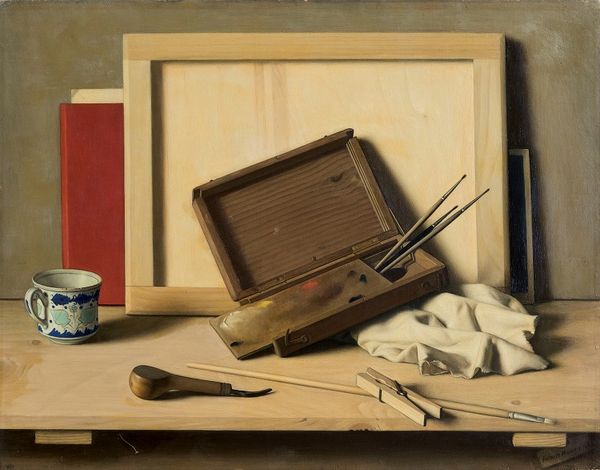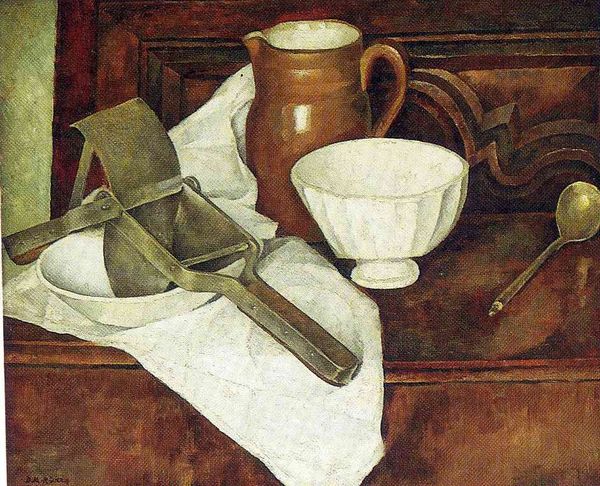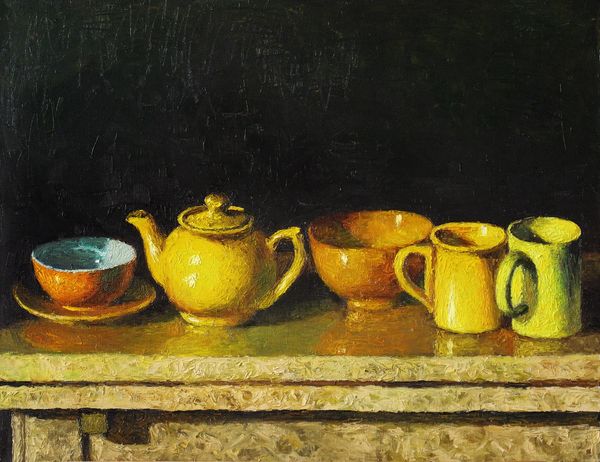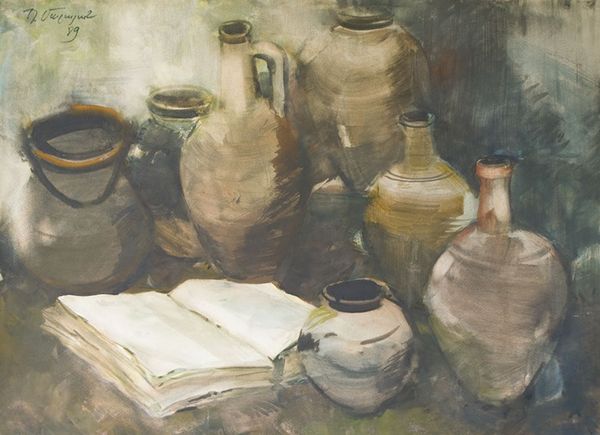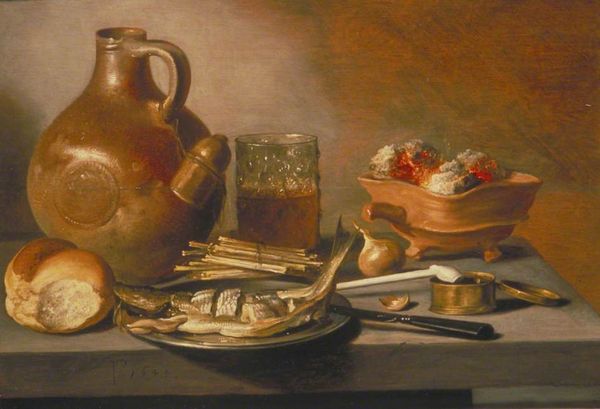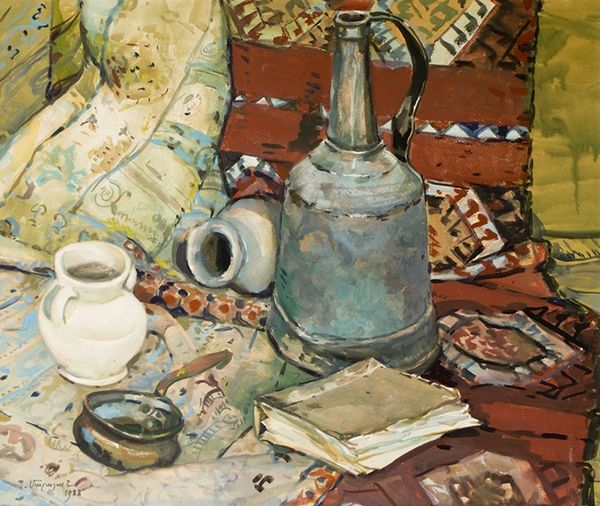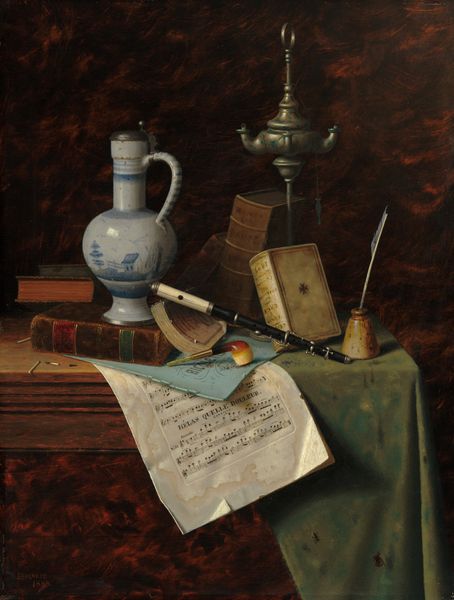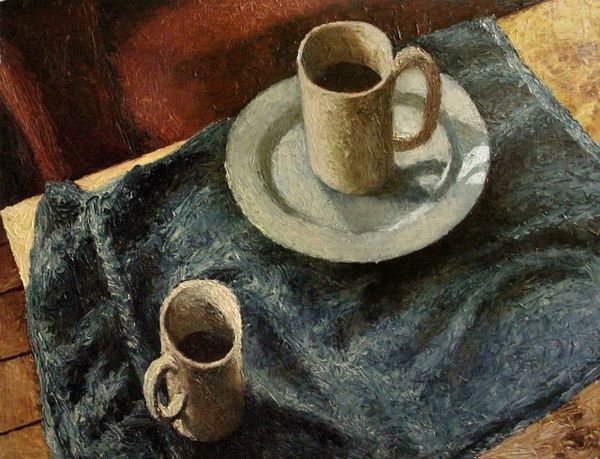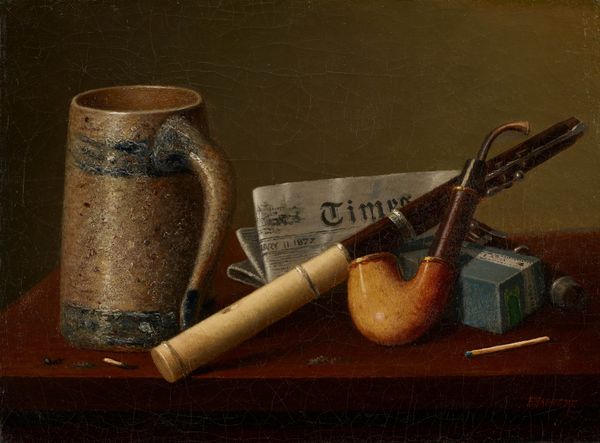
oil-paint, photography
#
still-life
#
oil-paint
#
sculpture
#
photography
#
academic-art
#
mixed media
#
watercolor
#
realism
Copyright: Public domain
Curator: Looking at François Barraud’s “Palette et pinceaux” from 1928, I'm struck by the texture. There’s a definite stillness. Almost like a memorial. Editor: Yes, stillness and quiet labor are key. It feels intimate, doesn’t it? Domestic, almost. A worn palette, brushes in a simple stoneware jug, a rumpled cloth…it speaks of daily artistic practice and the means of artistic production, not some grandiose statement. Curator: Absolutely. The muted color palette, primarily earth tones, focuses our attention on the materiality. Notice how Barraud renders the brushstrokes visible, celebrating the work. We can almost feel the weight and handle of the brushes and imagine the smell of oil paint, too. Editor: It also evokes ideas around artistic identity in the early 20th century, especially given Barraud’s association with magic realism and new objectivity. The image, from a sociopolitical lens, raises questions of labour and gender. Are the objects intended to be a sign of art made in a patriarchal society, of labour that often becomes less about passion and creativity and more about productivity, deadlines and sometimes, frustration? What about the implied domestic setting of this space? Curator: It prompts a reassessment of skill too. In foregrounding such unassuming equipment, he seems to question hierarchical relationships between “high” art and everyday object use, like that jug. It encourages reflection about class status, labour, value systems... Editor: Precisely. We see beyond an artist in isolation. This is a quiet tribute to the process and the socio-economic implications embedded in those brushes and pigment smudges. It makes you wonder about who the artist really paints for. Curator: I hadn't quite seen it that way, but now, the image feels heavy with implication. I appreciate your insights into the social dynamics embedded in these seemingly ordinary objects. Editor: Thank you. It’s easy to get lost in technique, but connecting to these pieces and thinking critically is essential. It helps ensure they resonate with the widest possible audiences.
Comments
No comments
Be the first to comment and join the conversation on the ultimate creative platform.
